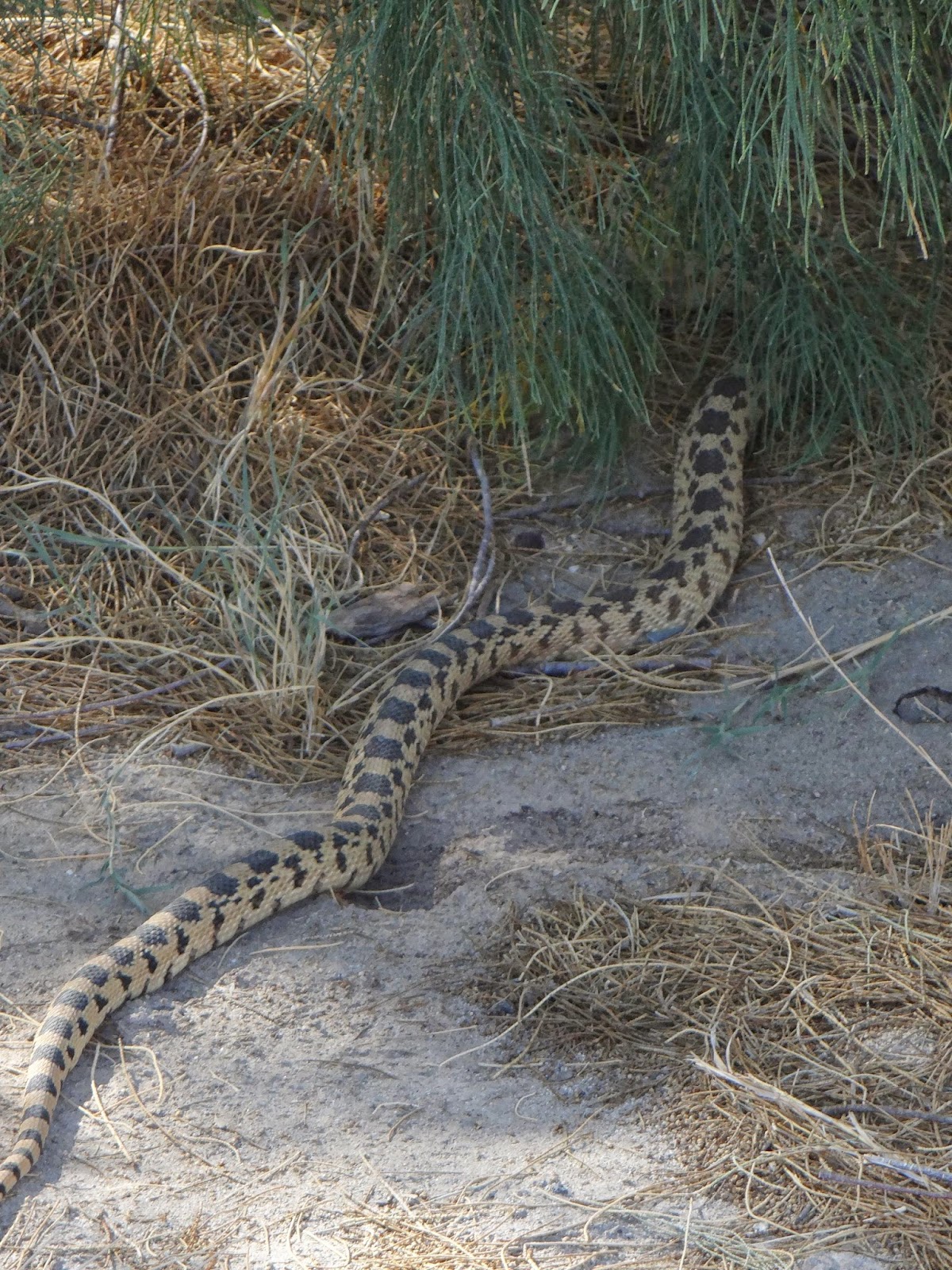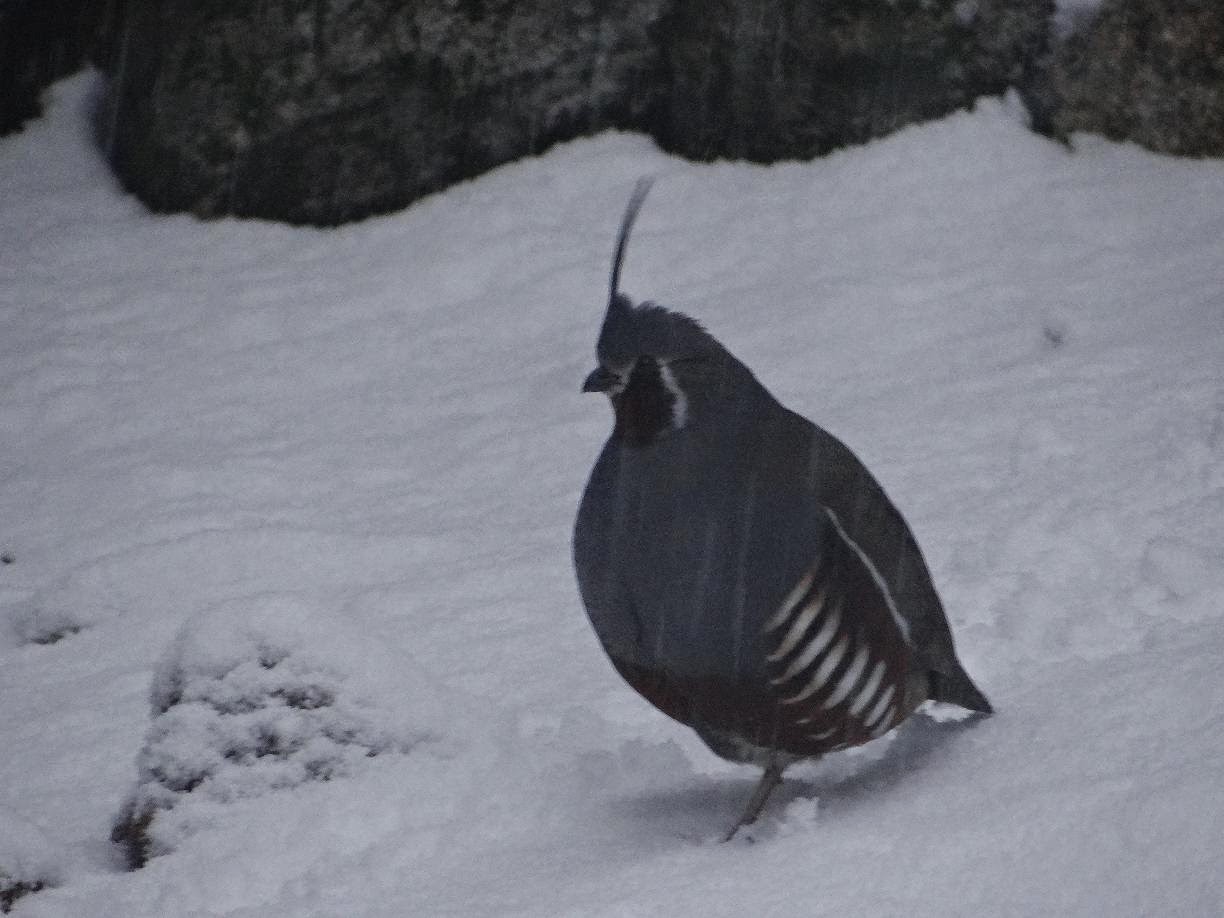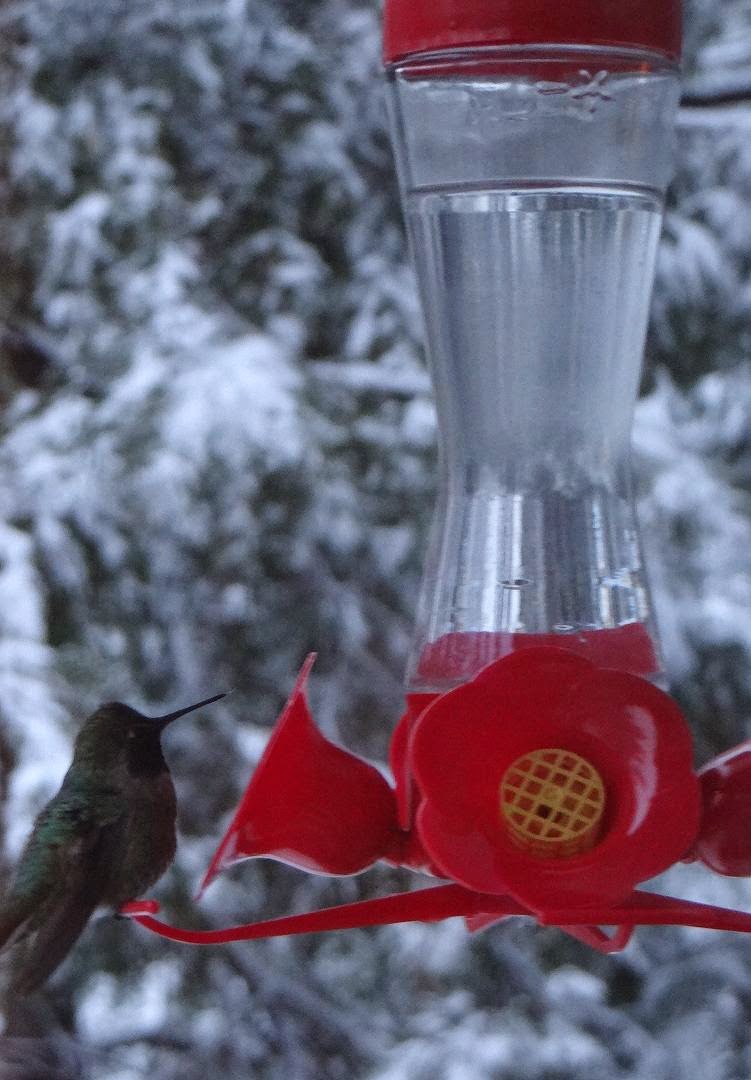The first signs of Spring we saw were the endless blooming Creosote bushes. A White-crowned Sparrow perched in this bush. Soon it will be heading north. It was a beautiful sight to see mile after mile of yellow blooms.
Last Fall, the desert was missing flowers. Now, the blooms of the Desert Senna, Yerba Mansa and White Prickly Poppy add color to the desert.
Spring brings other changes as well. The Say's Phoebe is one of the birds that nests in the desert. The sight of these tiny babies squished in their nest brought a smile to everyone's face.
During migration, many birds are just passing through the desert. After a long night flight, they look for green patches and water to rest up before resuming their trip north. A couple of American Avocets found this pond for their stopover.
The Belted Kingfisher found a perfect spot to rest at the Desert Studies Center - A pond filled with fish!
This one stays year round but most keep on going.
Lots of people, including me, want to see the Greater Roadrunner when they go to the desert. Unfortunately, they usually miss them since they are always on the move. The best time to see them is when they are sunning themselves in the morning. After that, good luck! This one was perched high on the rocks early in the morning so we caught a glimpse of him before he zoomed off.
Of course, the Roadrunner isn't the only one enjoying the sun. The Chuckwalla perched on this boulder in the early morning while this Gopher snake slithered away into the palms when we approached.
Last Fall, the desert was missing flowers. Now, the blooms of the Desert Senna, Yerba Mansa and White Prickly Poppy add color to the desert.
Spring brings other changes as well. The Say's Phoebe is one of the birds that nests in the desert. The sight of these tiny babies squished in their nest brought a smile to everyone's face.
During migration, many birds are just passing through the desert. After a long night flight, they look for green patches and water to rest up before resuming their trip north. A couple of American Avocets found this pond for their stopover.
The Belted Kingfisher found a perfect spot to rest at the Desert Studies Center - A pond filled with fish!
This one stays year round but most keep on going.
Lots of people, including me, want to see the Greater Roadrunner when they go to the desert. Unfortunately, they usually miss them since they are always on the move. The best time to see them is when they are sunning themselves in the morning. After that, good luck! This one was perched high on the rocks early in the morning so we caught a glimpse of him before he zoomed off.
Of course, the Roadrunner isn't the only one enjoying the sun. The Chuckwalla perched on this boulder in the early morning while this Gopher snake slithered away into the palms when we approached.
It's always good to wear boots in the desert but especially at night when you can't see anything. The scorpions are quite active at night. With a special light, you can see these awesome desert dwellers.
The scenery at the China Ranch Date Farm is amazing! This lush oasis surrounded by the desert is a family owned date farm. If you stop here, you will want to try one of the delicious date shakes - Yum!
After much searching, I found this calling Gambel's Quail perched high up in a tree at the farm.
Water attracts lots of life including dragonflies like this Flame Skimmer. The wings sparkled with a glitter of gold in the light.
Extraordinary plants and wildlife manage to survive inhospitable desert conditions. We were all stunned to see this unique Desert Five Spot flower emerge from an old dump outside the abandoned miner's homes at Dublin Gulch. It was quite an unexpected site for this delicate flower to emerge.
We are fortunate there are still places that exist that are protected from the development of man.
"Wilderness is not a luxury but a necessity of the human spirit, and as vital to our lives as water and good bread." Edward Abbey
Extraordinary plants and wildlife manage to survive inhospitable desert conditions. We were all stunned to see this unique Desert Five Spot flower emerge from an old dump outside the abandoned miner's homes at Dublin Gulch. It was quite an unexpected site for this delicate flower to emerge.
"Wilderness is not a luxury but a necessity of the human spirit, and as vital to our lives as water and good bread." Edward Abbey



































































